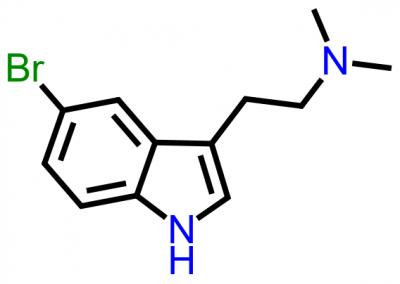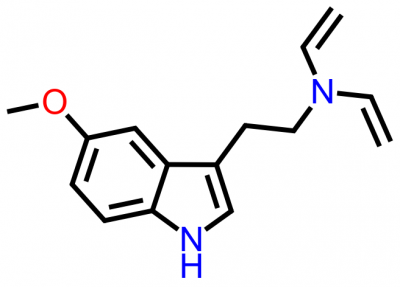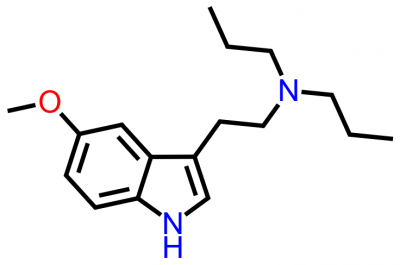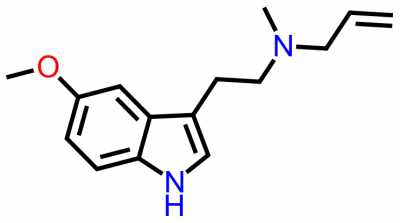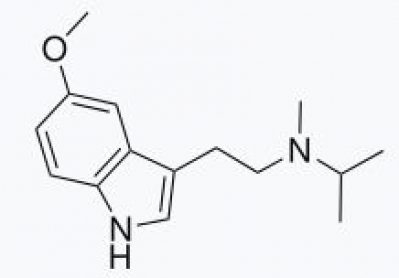5-MeO-DMT Freebase - ONLY SHIP WITHIN CANADA! LIMITED QTY ONLY!
*** If you order this and your shipping address is NOT in Canada, it will NOT be shipped. Instead, you will be issued Reward Points of equal value. ***
Relevant identified uses: For research use only, not for human or veterinary use
5-Methoxy-DMT / 5-methoxy-N,N-dimethyltryptamine)
Molecular Formula: C13H18N2O
Molecular Weight:218.29 g/mol
Form: Freebase
IUPAC: 2-(5-Methoxy-1H-indol-3-yl)-N,N-dimethylethan-2-amine
CAS: 1019-45-0
Material Data Safety Sheet: Available upon request
NMR: Available upon request
LCMS: Available upon request
NOTE: We only ship this product to Canada
This research chemical is restricted in certain countries, region(s) and including individual states in USA. For some guidelines and more details please click this link: https://chemlogix.ca/restricted-teritories
Additional Information
The serotonergic hallucinogen 5-Methoxy-N,N-dimethyltryptamine disrupts cortical activity in a regionally-selective manner via 5-HT1A and 5-HT2A receptors, October 2015, Neuropharmacology 101, DOI 10.1016/j.neuropharm.2015.10.016
Abstract:
5-Methoxy-N,N-dimethyltryptamine (5-MeO-DMT) is a natural hallucinogen, acting as a non-selective serotonin 5-HT1A/5-HT2A-R agonist. Psychotomimetic agents such as the non-competitive NMDA-R antagonist phencyclidine and serotonergic hallucinogens (DOI and 5-MeO-DMT) disrupt cortical synchrony in the low frequency range (<4 Hz) in rat prefrontal cortex (PFC), an effect reversed by antipsychotic drugs. Here we extend these observations by examining the effect of 5-MeO-DMT on low frequency cortical oscillations (LFCO, <4 Hz) in PFC, visual (V1), somatosensory (S1) and auditory (Au1) cortices, as well as the dependence of these effects on 5-HT1A-R and 5-HT2A-R, using wild type (WT) and 5-HT2A-R knockout (KO2A) anesthetized mice. 5-MeO-DMT reduced LFCO in the PFC of WT and KO2A mice. The effect in KO2A mice was fully prevented by the 5-HT1A-R antagonist WAY-100635. Systemic and local 5-MeO-DMT reduced 5-HT release in PFC mainly via 5-HT1A-R. Moreover, 5-MeO-DMT reduced LFCO in S1, Au1 and V1 of WT mice and only in V1 of KO2A mice, suggesting the involvement of 5-HT1A-R activation in the 5-MeO-DMT-induced disruption of V1 activity. In addition, antipsychotic drugs reversed 5-MeO-DMT effects in WT mice. The present results suggest that the hallucinogen action of 5-MeO-DMT is mediated by simultaneous alterations of the activity of sensory (S1, Au1, V1) and associative (PFC) cortical areas, also supporting a role of 5-HT1A-R stimulation in V1 and PFC, in addition to the well-known action on 5-HT2A-R. Moreover, the reversal by antipsychotic drugs of 5-MeO-DMT effects adds to previous literature supporting the usefulness of the present model in antipsychotic drug development.
The natural hallucinogen 5-MeO-DMT, component of Ayahuasca, disrupts cortical function in rats: Reversal by antipsychotic drugs, March 2014 The International Journal of Neuropsychopharmacology 17(08):1-14, DOI 10.1017/S1461145714000261 (FULL TEXT AVAILABLE UPON REQUEST)
Abstract:
5-Methoxy-N,N-dimethyltryptamine (5-MeO-DMT) is a natural hallucinogen component of Ayahuasca, an Amazonian beverage traditionally used for ritual, religious and healing purposes that is being increasingly used for recreational purposes in US and Europe. 5MeO-DMT is of potential interest for schizophrenia research owing to its hallucinogenic properties. Two other psychotomimetic agents, phencyclidine and 2,5-dimethoxy-4-iodo-phenylisopropylamine (DOI), markedly disrupt neuronal activity and reduce the power of low frequency cortical oscillations (<4 Hz, LFCO) in rodent medial prefrontal cortex (mPFC). Here we examined the effect of 5-MeO-DMT on cortical function and its potential reversal by antipsychotic drugs. Moreover, regional brain activity was assessed by blood-oxygen level dependent (BOLD) functional magnetic resonance imaging (fMRI). 5-MeO-DMT disrupted mPFC activity, increasing and decreasing the discharge of 51 and 35% of the recorded pyramidal neurons, and reducing (-31%) the power of LFCO. The latter effect depended on 5-HT1A and 5-HT2A receptor activation and was reversed by haloperidol, clozapine, risperidone, and the mGlu2/3 agonist LY379268. Likewise, 5-MeO-DMT decreased BOLD responses in visual cortex (V1) and mPFC. The disruption of cortical activity induced by 5-MeO-DMT resembles that produced by phencyclidine and DOI. This, together with the reversal by antipsychotic drugs, suggests that the observed cortical alterations are related to the psychotomimetic action of 5-MeO-DMT. Overall, the present model may help to understand the neurobiological basis of hallucinations and to identify new targets in antipsychotic drug development.

